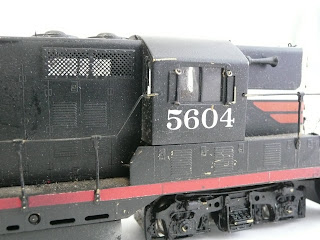The GMC Astro semi-tractor is one of the classic late seventies/early eighties cab-over truck designs, created as a response to legislation that limited the overall length of semi-trucks and trailers.
By mounting the cab over the engine, these trucks were able to use shorter chassis and therefore haul longer trailers.
Legislation changes in the 90's meant that the length limits were increased and all current North American truck designs are the traditional long-nose type.
This particular GMC truck was familiar to UK audiences from movies like Convoy, Beverly Hills Cop and also the similar cabover designs by Freightliner and Kenworth were frequently seen in TV shows like 'BJ and the Bear'
The only HO version of this truck is a model originally released by Lindberg in the seventies and then re-issued by Revell, but it has been out of production for well over a decade.
I recently picked up one of these kits cheaply on eBay and I plan to use it to recreate the truck from Beverly Hills Cop, a short wheelbase Astro with a large airdam and an excellent 70's paint scheme, towing twin pup trailers.
The kit is in mint condition and complete with decals and instructions, but as the trailer is not particularly high quality, I will most likely discard most of the trailer parts and mate the cab with an Athearn chassis.















